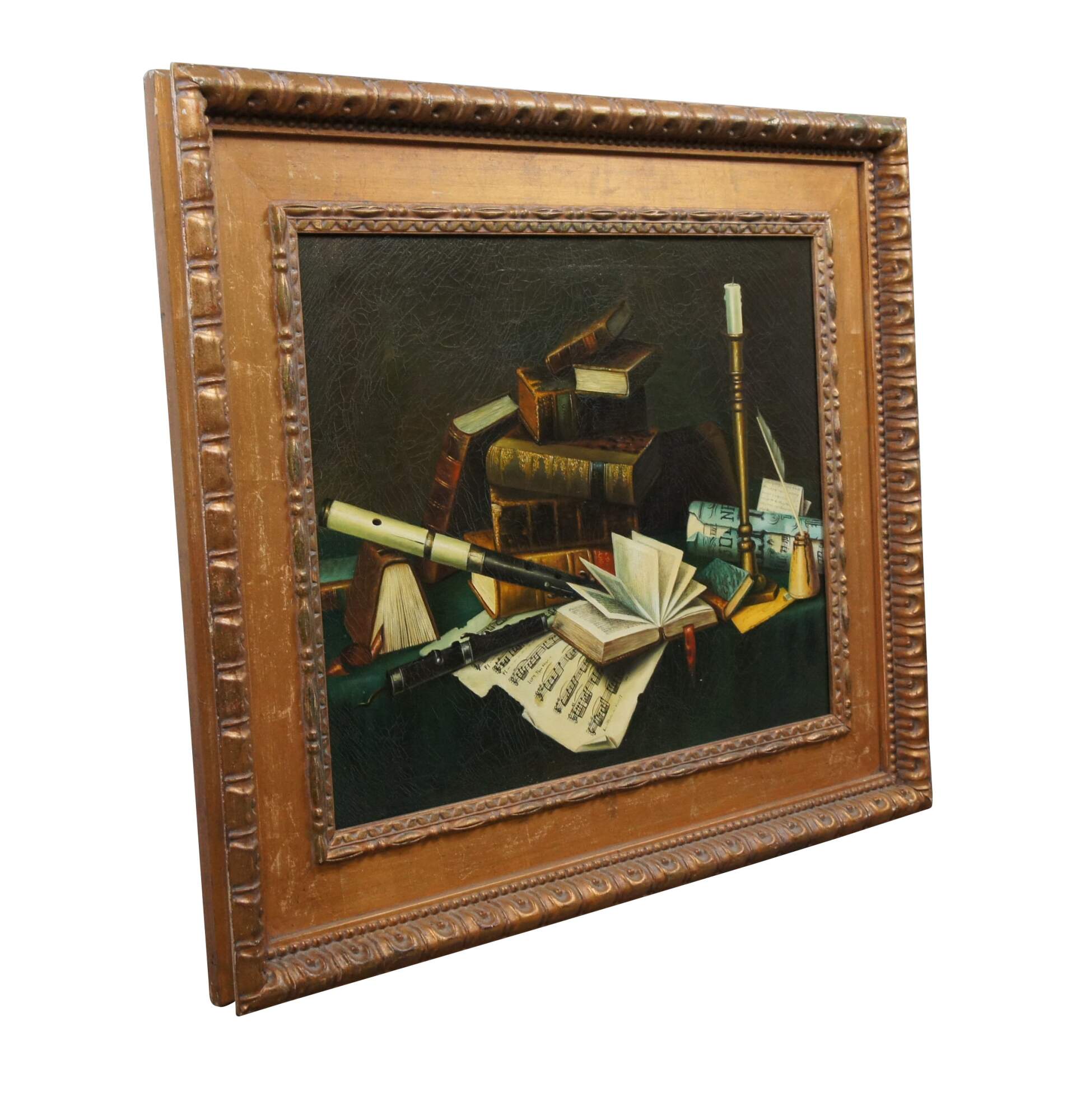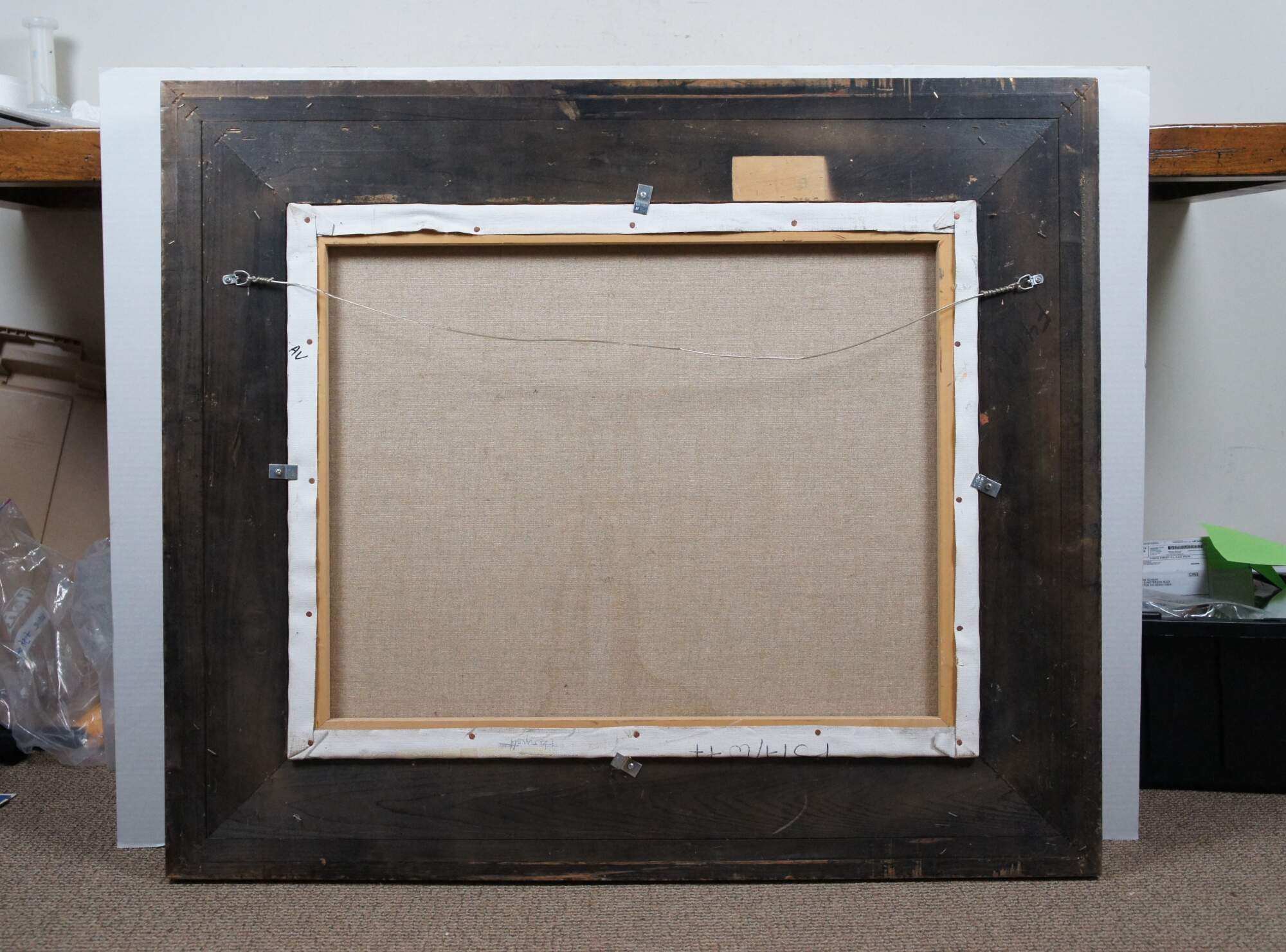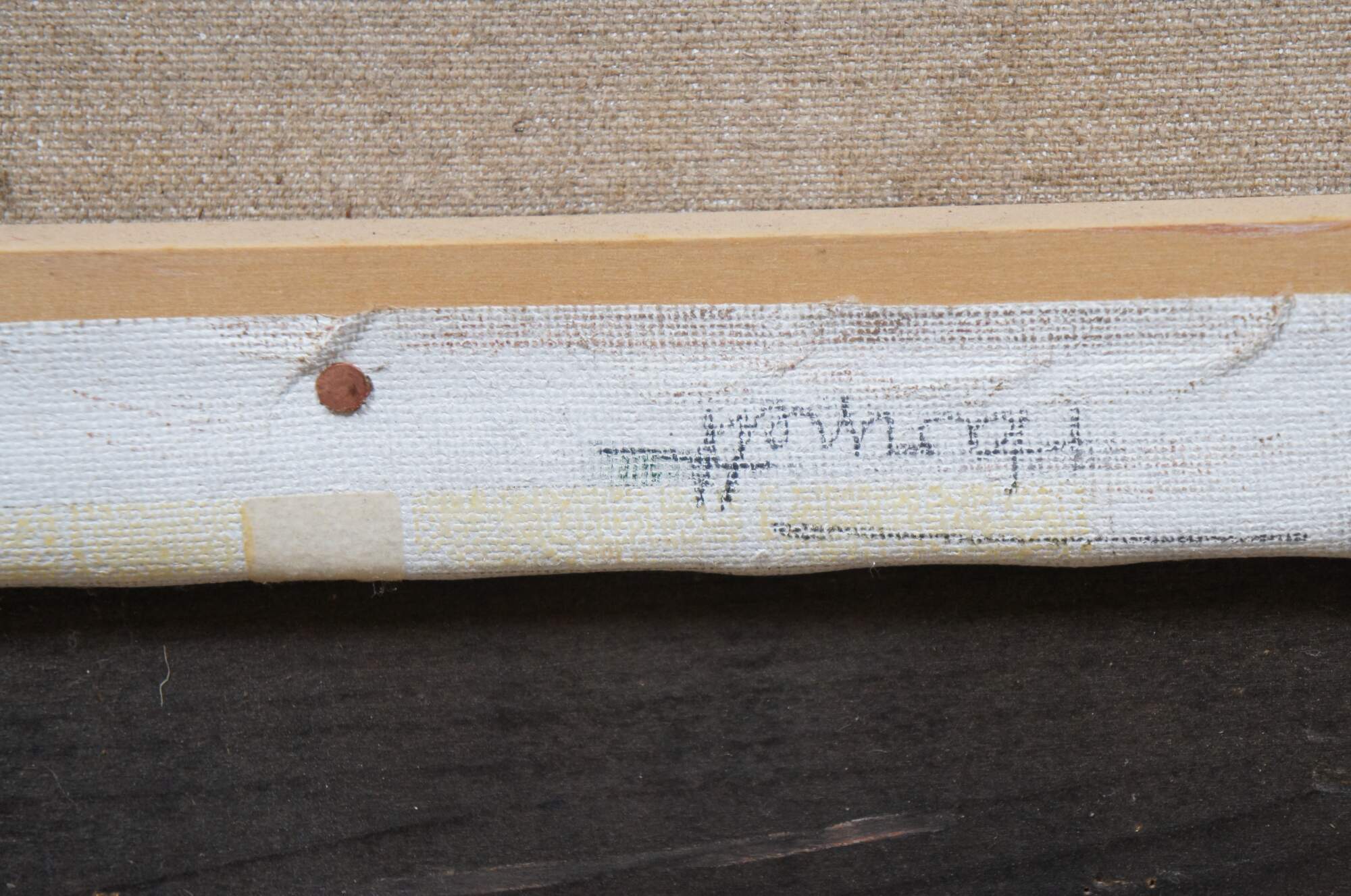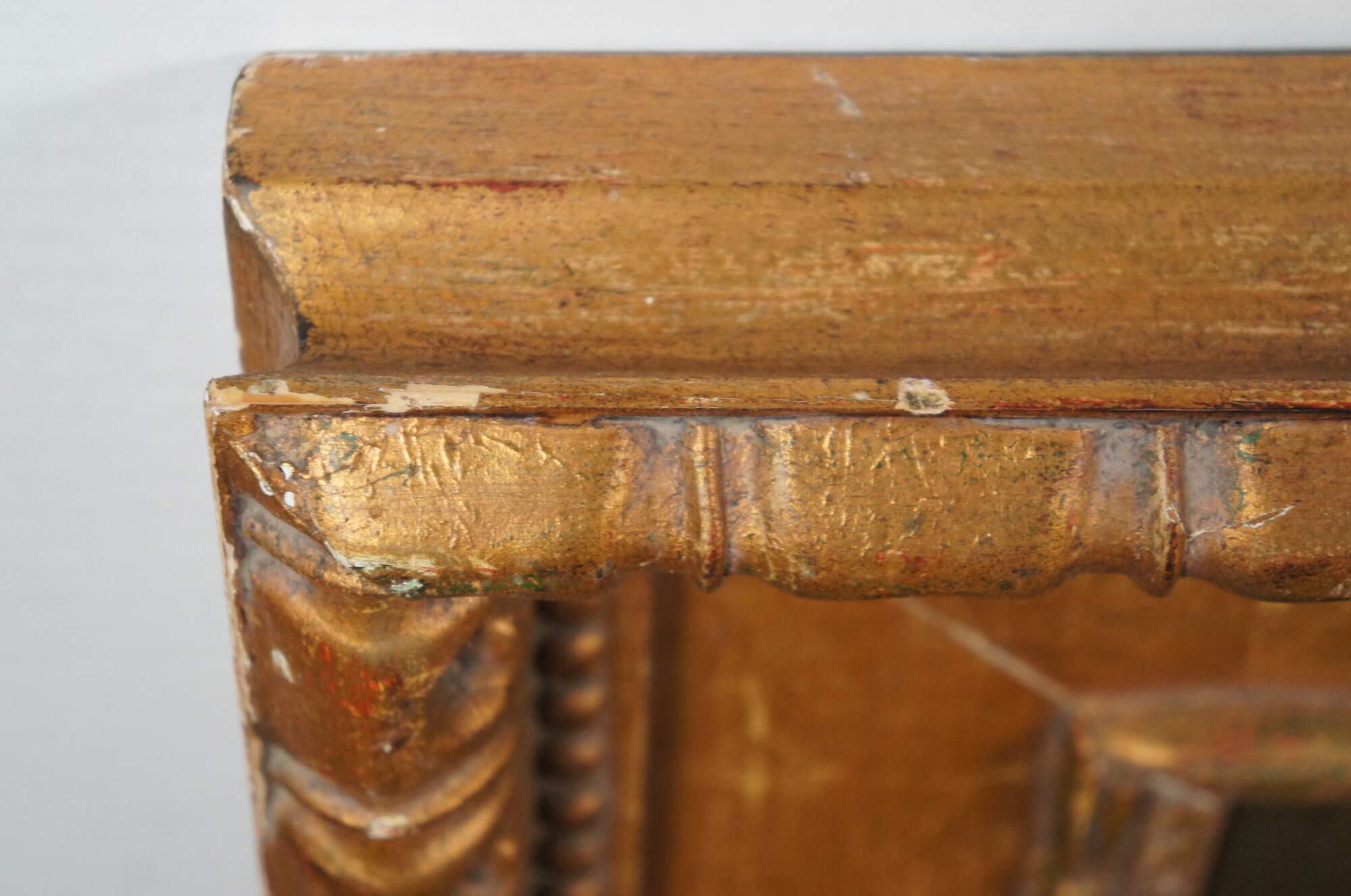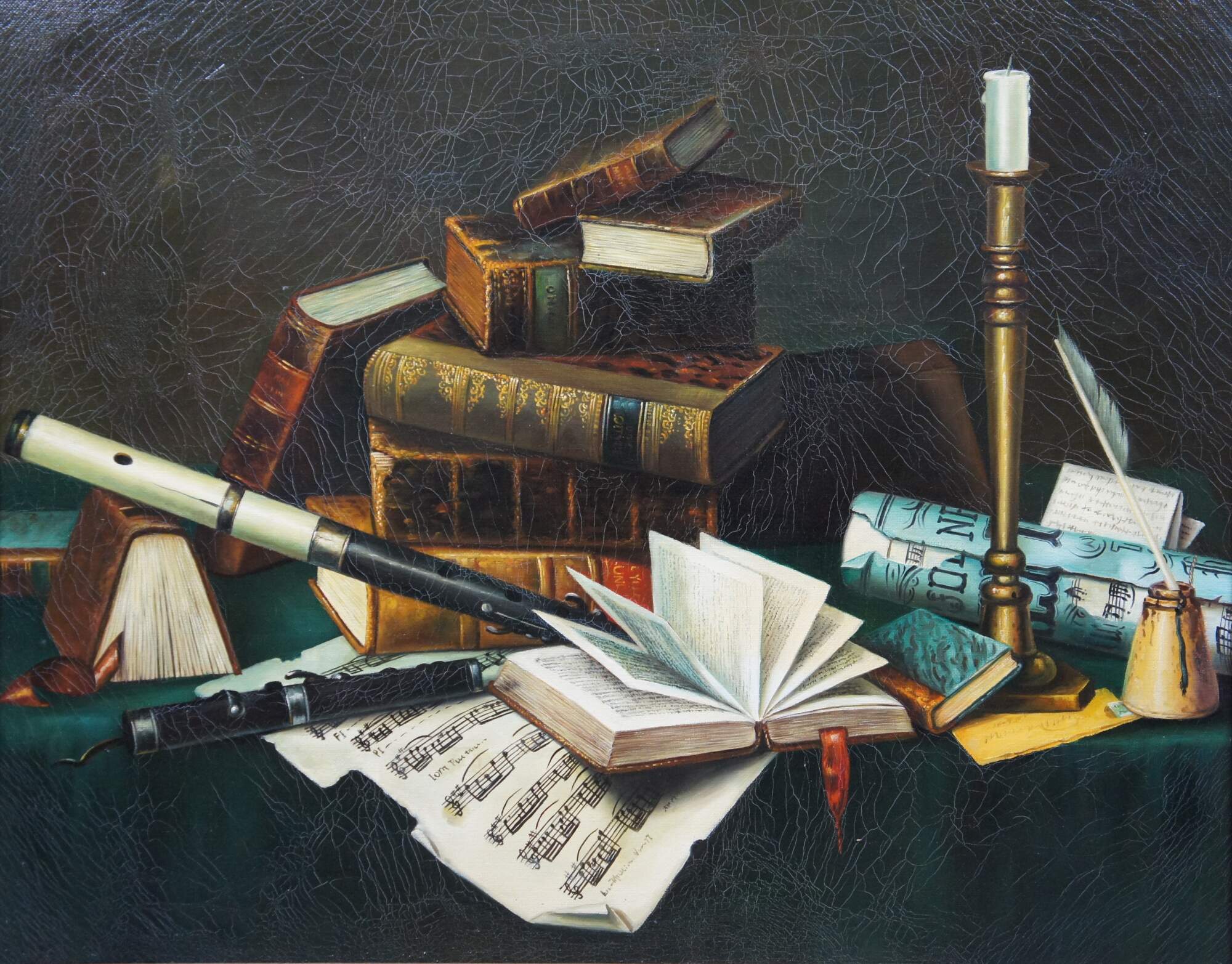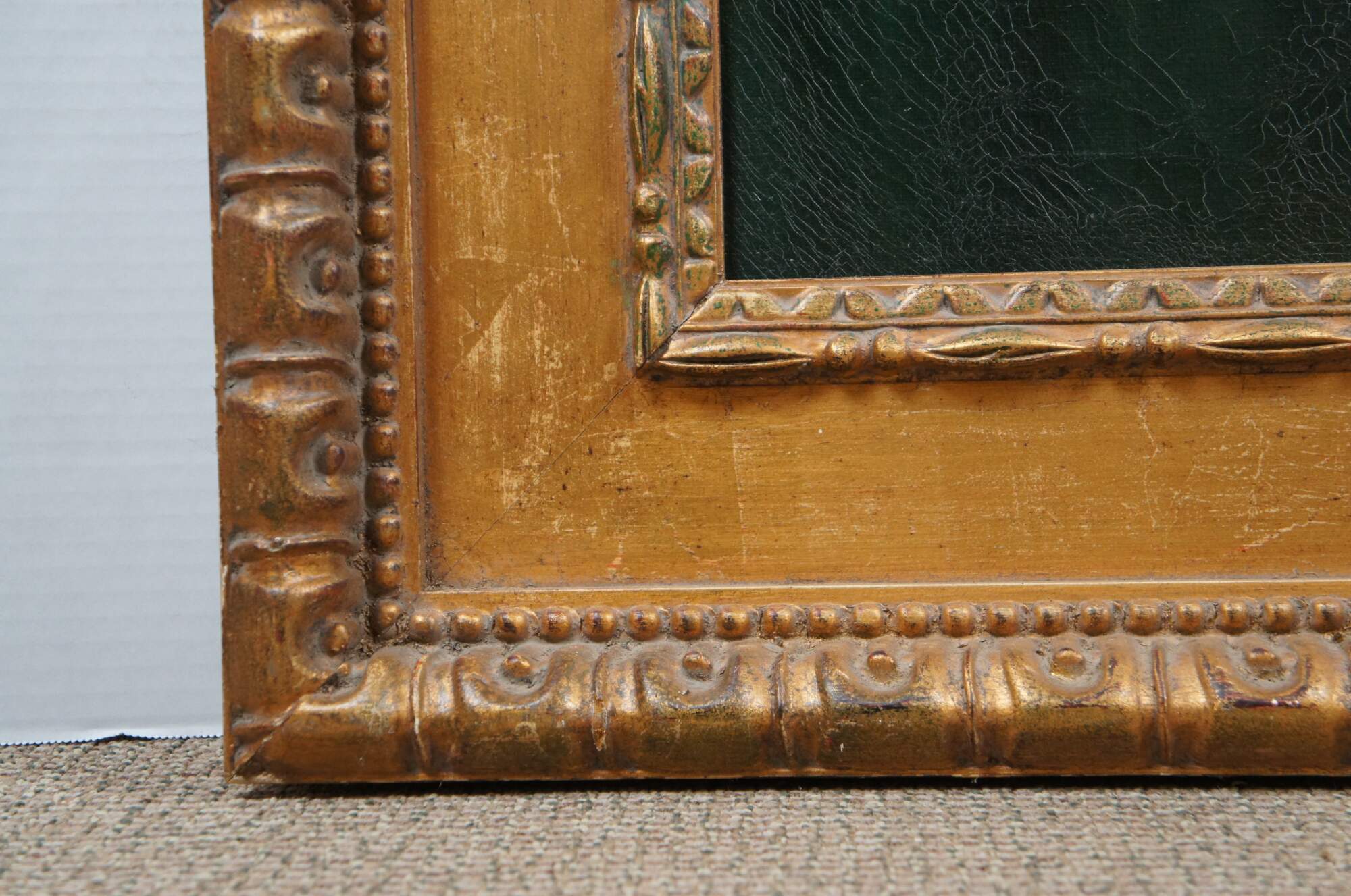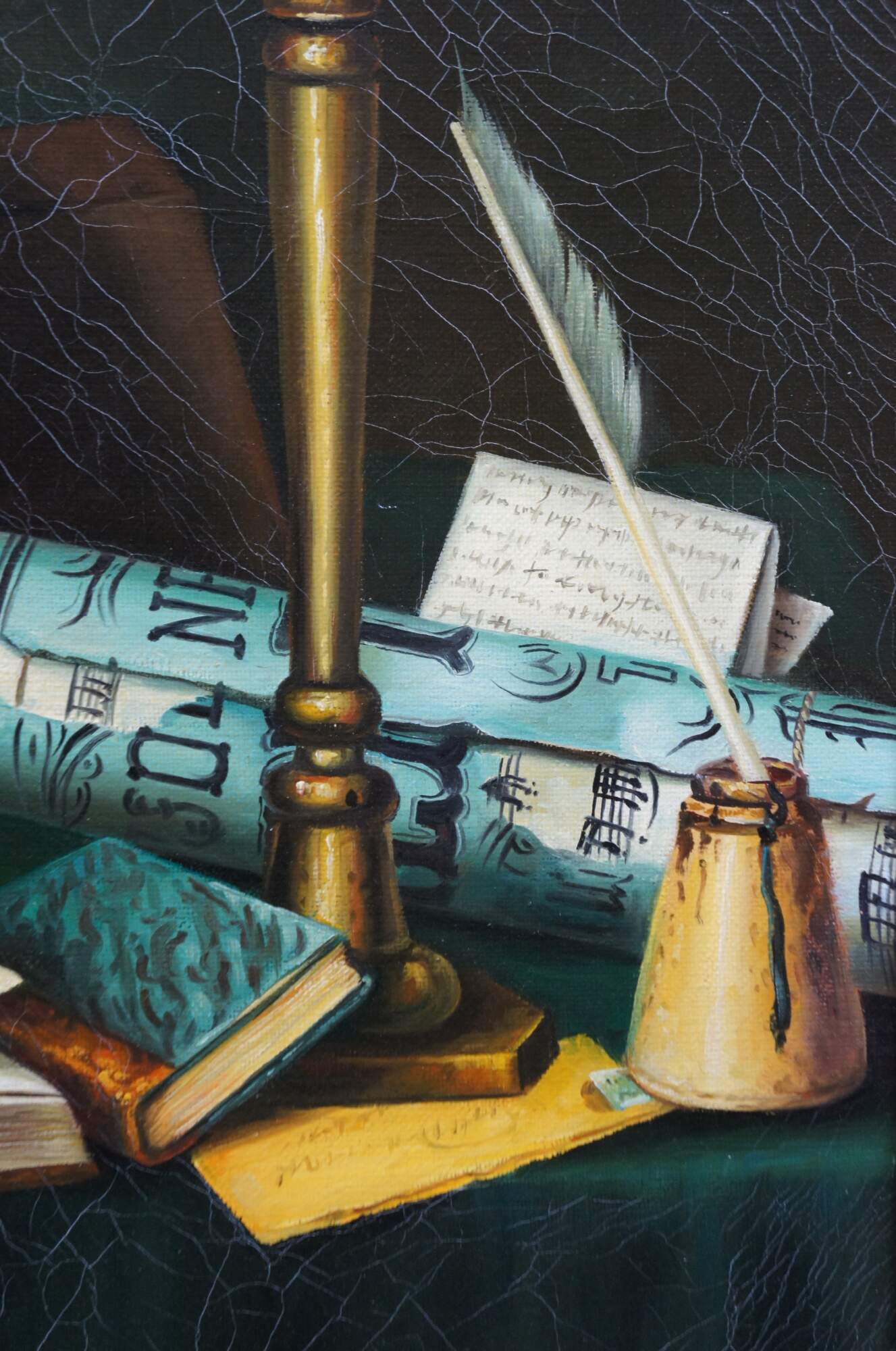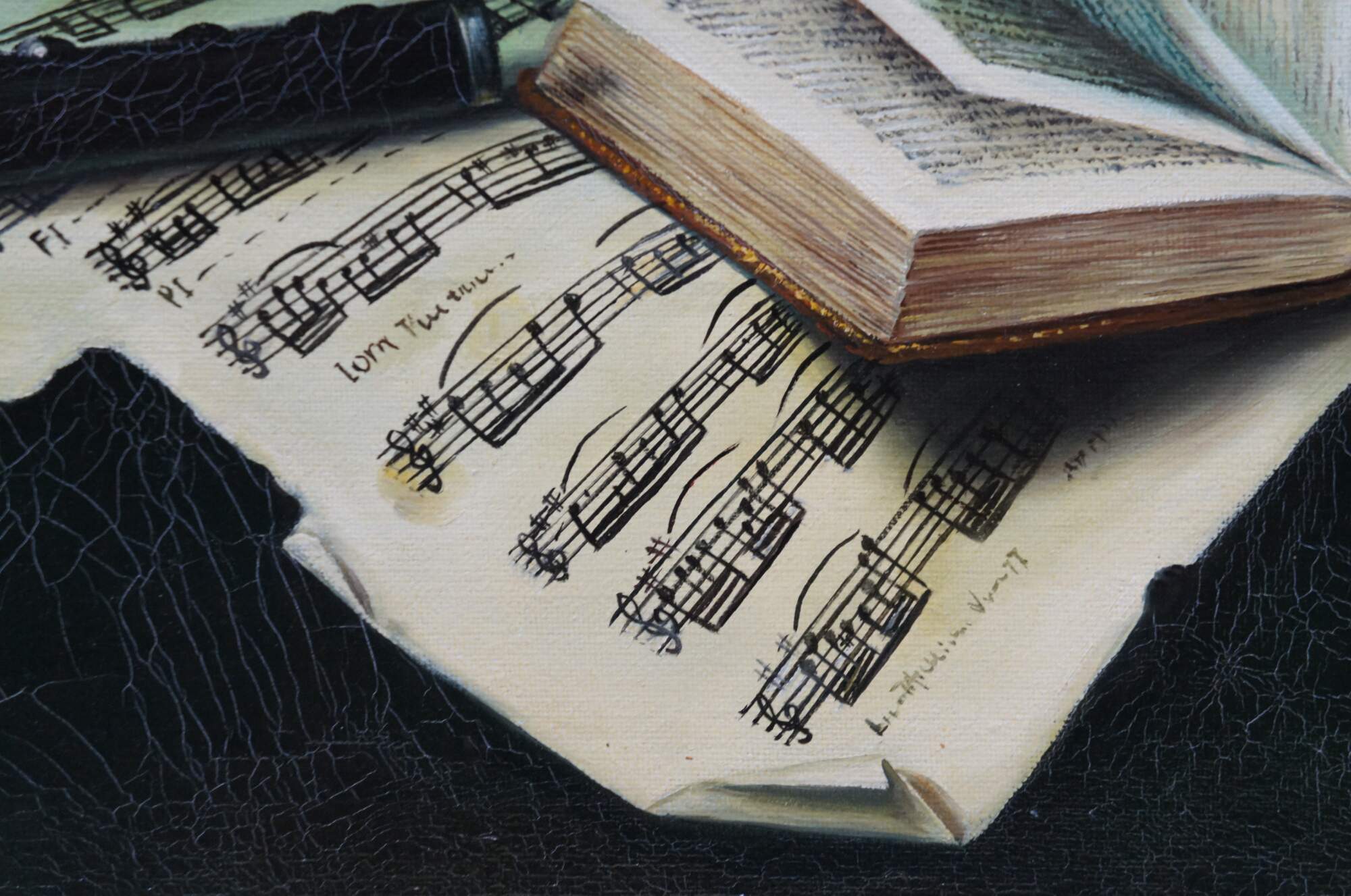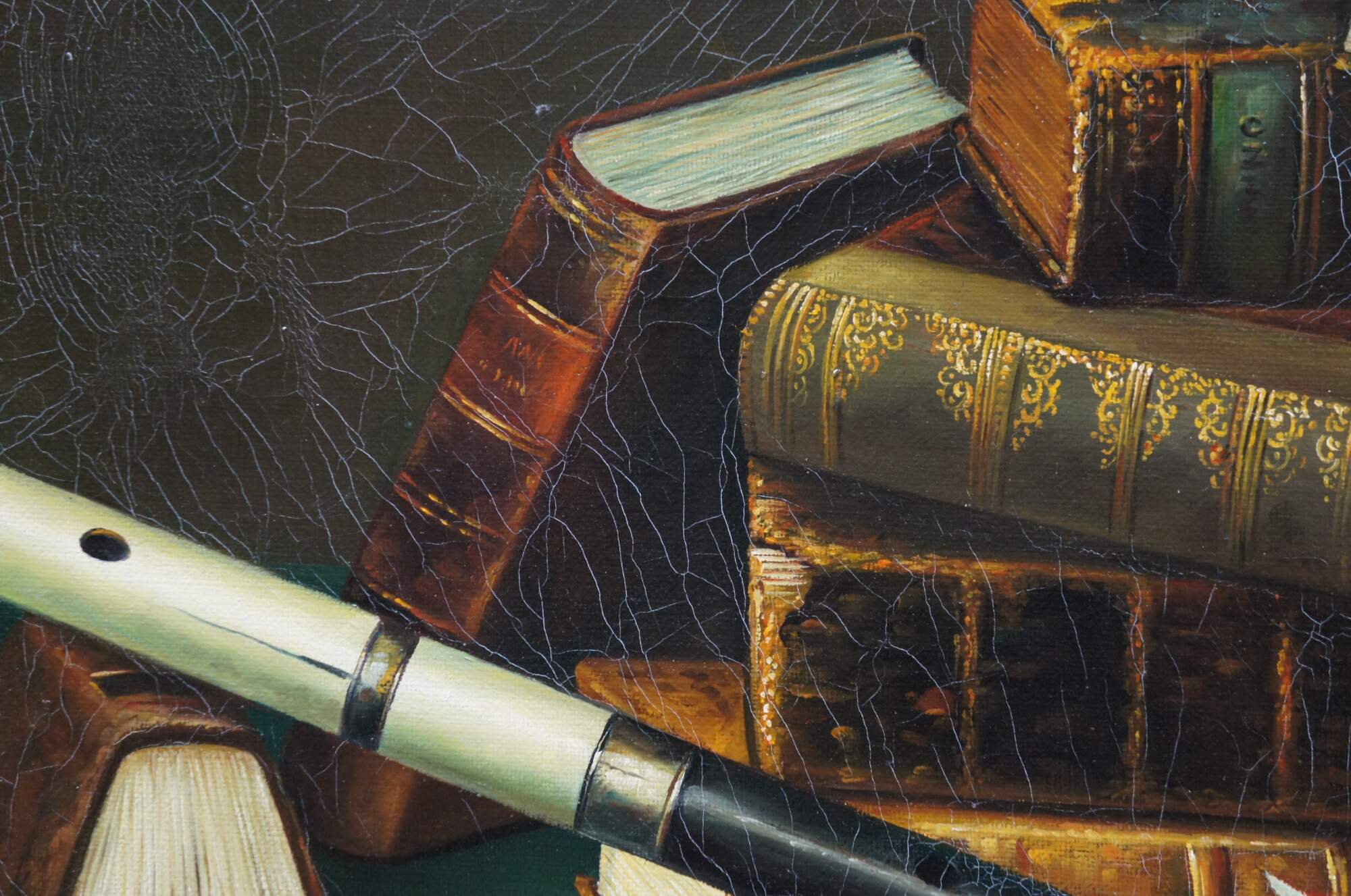
Music & Literature Still Life Oil Painting After William Michael Harnett 41"
$940.00
Shipping:
Free Shipping Included
Delivery:
Estimated 2-15 Business Days
Payments:
Credit Card, Check, Cash, PayPal, Apple Pay, Venmo
Returns:
30 Days 100% Money Back Guarantee, Buyer Pays Return Shipping
Description
Late 20th century oil painting on canvas after "Music and Literature" by William Michael Harnett. Depicts a still life tableau on a cloth covered library table featuring stacks of books, sheet music, candle, inkwell and wind instrument. Molded resin frame with gold finish.
"Following the end of the Civil War, still life painting became very popular in the United States. While critics did not recognize the genre as high art, works were commercially successful and prominently displayed in homes throughout the country. William Michael Harnett is considered one of the premier trompe l'oeil painters of the nineteenth century. In his works, everything is rendered highly realistically, right down to the smallest details. The artist's expert depiction of texture is evident in many of the objects in Music and Literature. These include tattered and stained sheets of music, books with worn leather covers, and a brass candlestick that appears to reflect the light. Harnett’s skill elevated his subjects, subsequently inspiring many artists who came after him to explore the technique as well. However, there is more to this painting than pure showmanship and mere artistic dexterity. The art forms of music and literature aid in preserving the past; therefore, Harnett specifically included the early seventeenth-century novel Don Quixote by Miguel de Cervantes (Spanish, 1547–1616) and the sheet music from the more recent opera La Traviata, composed in 1853 by Giuseppe Verdi (Italian, 1813–1901). Both, however, are worn with age, as are the other elements of the composition. The flute is cracked, and the candle almost completely burned down. All of these details add a note of melancholy to the painting, reminding us of the inevitable passage of time." (Source: Buffalo AKG Art Museum)
"William Michael Harnett, born in 1848, studied art extensively and became one of America's leading trompe l'oeil painters of the 19th century. Harnett began his studies at Pennsylvania Academy of Fine Art, and then took night classes at Copper Union in 1871, continued at National Academy of Design in 1874. He later traveled to London, Frankfurt and Munich in the early 1880s. Harnett influenced a generation of artists despite his critically unpopular position and maintained a large audience and patrons. Harnett's first exhibit was at the Downtown Gallery, in NYC, 1929. His work can be grouped into two distinct categories. Harnett's earlier work (1874-80) consisted of small still lifes with intricate texture, a skill he developed as a silver engraver years before. In 1879, The Artist's Letter Rack came to represent the second stage of Harnett's painting career. A bulletin board covered in memorabilia mixes flat objects in shallow space to create illusionism. Harnett also received great acclaim for After the Hunt (1885), shown in the Paris Salon. Harnett died in 1892." (Source: askART)
Condition
Good Overall - Crazing to surface; gentle wear
Dimensions
41" x 3" x 35" / Sans Frame - 29.25" x 23.5" (Width x Depth x Height)
